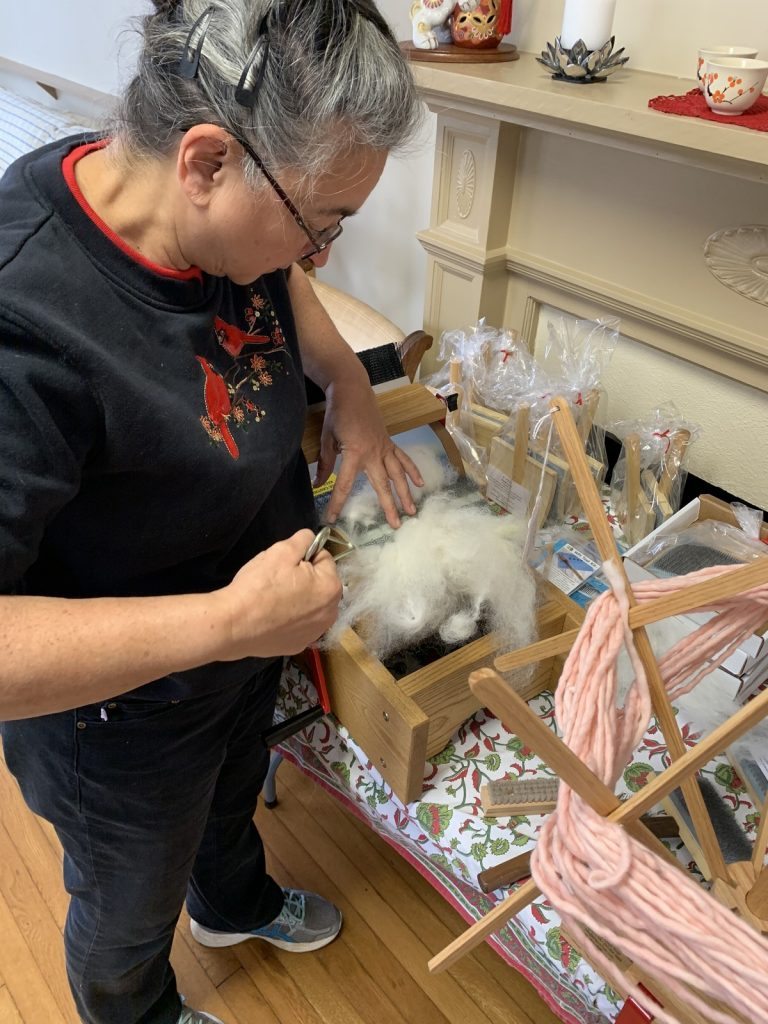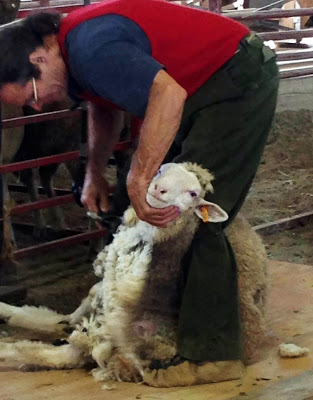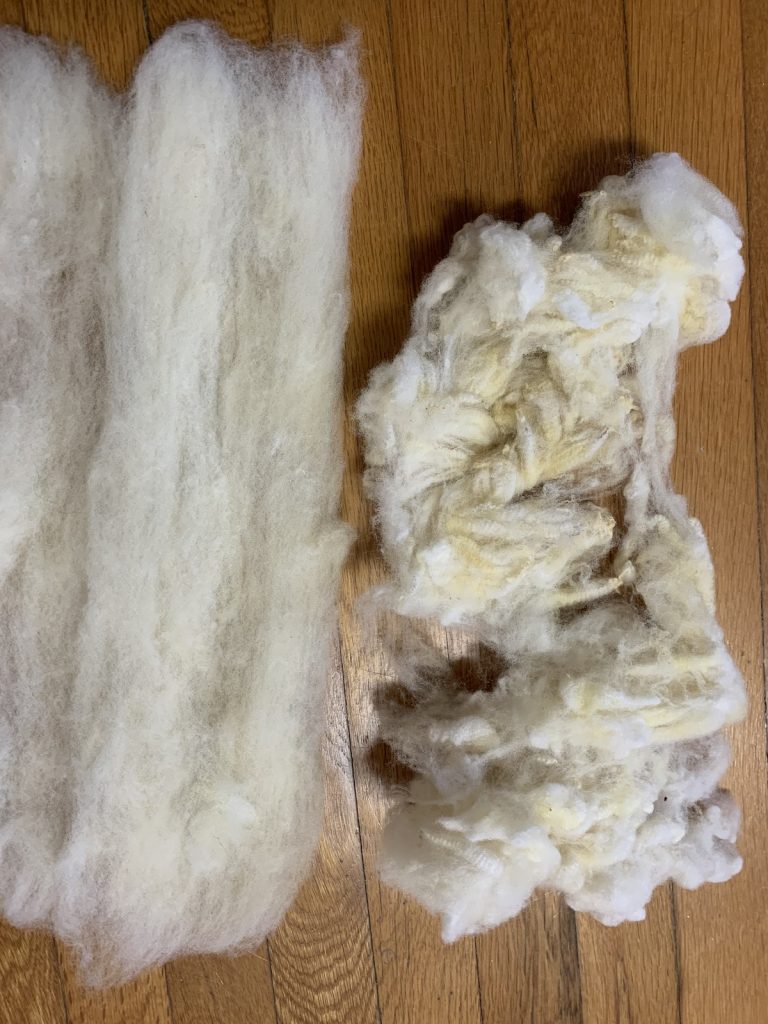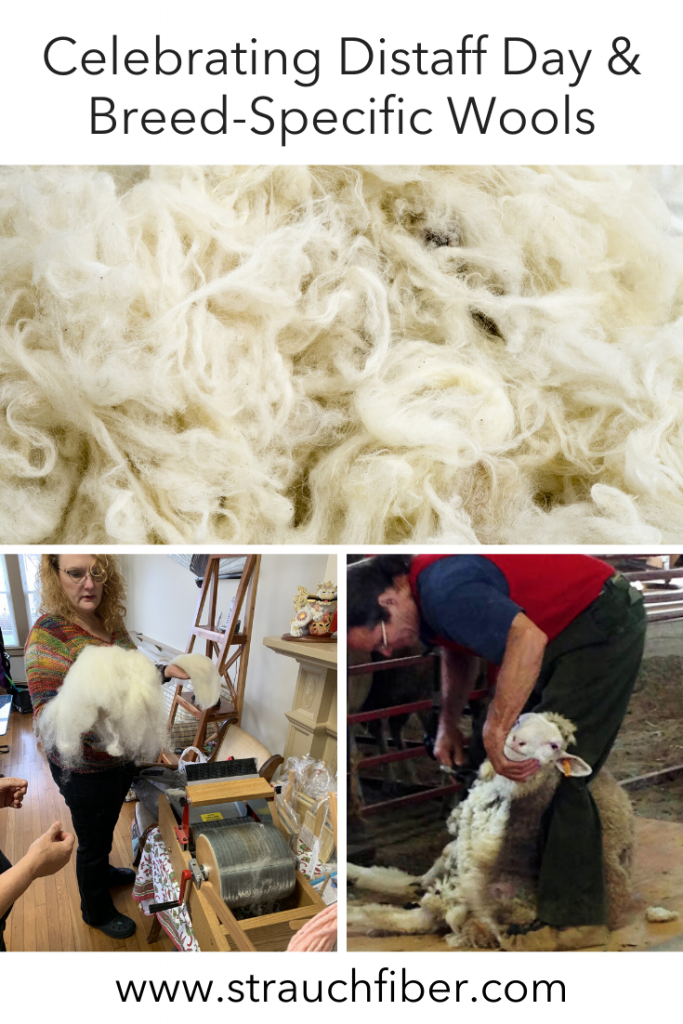Earlier this month, we celebrated Distaff Day at Wild Skeins, our Local Yarn store here in Hickory, NC. A distaff is a long tool used in handspinning which keeps fibers from getting tangled and dates back to medieval times. Distaffs are still in use today, primarily for spinning flax fibers, although they can be used to spin other fibers as well. Distaff Day is said to coincide with the Catholic holiday celebrating St. Distaff, but handspinners and fiber enthusiasts have adopted this day to celebrate all things handspinning and fiber (more on that here).
![The Spinner by William-Adolphe Bouguereau [Public domain]](http://www.strauchfiber.com/wordpress/wp-content/uploads/2020/01/328px-William-adolphe_bouguereau_the_spinner.jpg)
The Spinner by William-Adolphe Bouguereau [Public Domain]

One of the benefits of handspinning is that you have complete control over the fiber content of your yarn – and generally speaking, you have a wider range of fiber options than you would find in commercially-made yarns. In addition to other fiber-producing animals, there are hundreds upon hundreds of sheep breeds to explore – you just have to know where to look for them! Here are some tips to get you started:
Festivals & Shows
A good place to start is your local fiber festival, farmer’s market, or state or county fair. Here, local or regional farmers are invited to sell their wares, and you can frequently speak directly to the person who raises the animals, or meet the animals themselves. Some shows have sheep shearing demonstrations, breed judging, and fleece auctions as well. Needless to say, they are an excellent place to start exploring breed-specific wool! You can find a list of fiber events and festivals here on the Knitter’s Review website.

Breeder’s Associations
A growers or breeders association for the particular animal or sheep breed you are interested in can be a wealth of interesting information. Most associations also have a list of breeders you can contact to ask about purchasing their fiber, and maybe even visit the farm or ranch to see the animals in person!
Online Shopping
If you aren’t able to attend any festivals or shows, the good news is that you can also find breed-specific wools online. Of course, you can’t touch them ahead of time to assess their quality, but there are many farmers who are selling their fleece and fiber on Etsy or even via their own websites, so it’s worth giving them a try! Author & wool expert Beth Brown-Reinsel has a list of breed-specific yarn and fiber producers found here on her website.

If you’d like to learn more about breed-specific wool, here are some excellent reference books worth adding to your shelf: The Knitter’s Book of Wool by Clara Parkes; The Field Guide to Fleece and The Fleece & Fiber Sourcebook, both by Deborah Robson and Carol Ekarius, and The Spinner’s Book of Fleece by Beth Smith.
Will you be working with breed-specific wools in 2020? Be sure to share photos of what you’re carding, spinning and felting over on Instagram using the #strauchfiber hashtag, too!
Love this post? Pin it!
